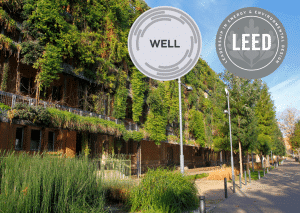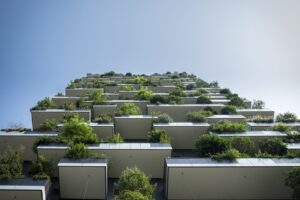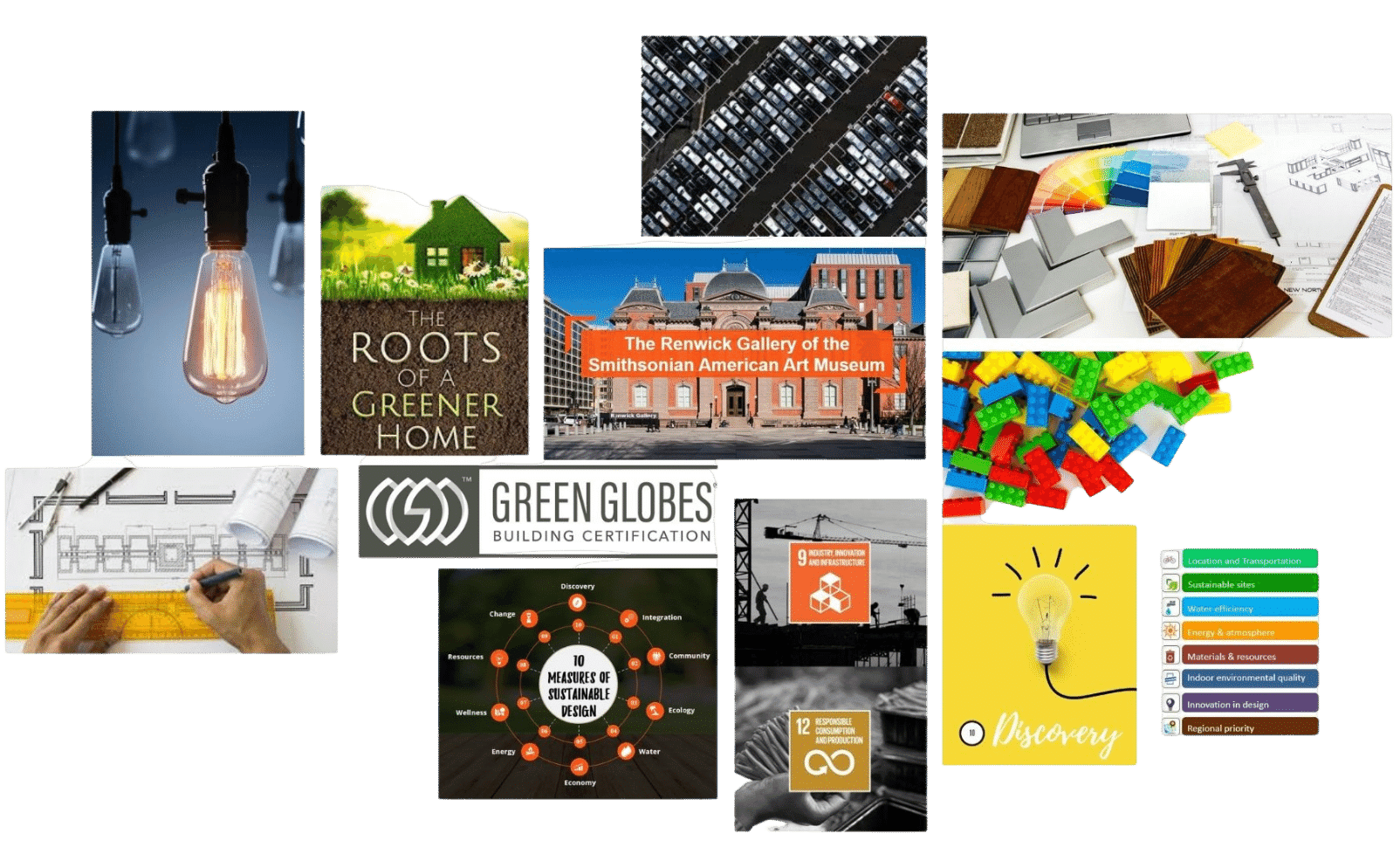What is WELL?
With the advancement in technology, the amount of time we spend indoors has increased considerably. In fact, some studies suggest that people nowadays, especially in urban areas, spend over 90% of their time indoors. As such, the built environment has a profound impact on our overall health and well being.
A lot of factors affect the health, happiness and productivity of a building’s occupants like staying immobile for long periods of time, poor air quality, stress, improper food choices, poor posture etc. The built environment shapes and influences all these factors.
WELL is the leading tool for advancing health and well-being in buildings globally. It is all about buildings and communities that help people thrive.
What is WELL Building Standard?
 The WELL Building Standard is a performance-based system for measuring, certifying, and monitoring features of the built environment that impact human health and wellbeing, through seven core areas – air, water, nourishment, light, fitness, comfort, and mind.
The WELL Building Standard is a performance-based system for measuring, certifying, and monitoring features of the built environment that impact human health and wellbeing, through seven core areas – air, water, nourishment, light, fitness, comfort, and mind.
WELL is managed and administered by the International WELL Building Institute (IWBI), a public benefit corporation whose mission is to improve human health and wellbeing through the built environment.
WELL is grounded in a body of medical research that explores the connection between the buildings where we spend more than 90 percent of our time, and the health and wellness of its occupants. WELL Certified spaces and WELL Compliant core and shell developments can help create a built environment that improves the nutrition, fitness, mood, and sleep patterns.
The WELL Building Standard is third-party certified by the Green Business Certification Incorporation (GBCI), which also administers the LEED certification program and the LEED professional credentialing program.
WELL is revolutionizing the way people think about buildings. It explores how design, operations and behaviors within the places where we live, work, learn and play can be optimized to advance human health and well being. Covering the above mentioned seven core concepts of health and hundreds of features, WELL is a flexible building standard and represents the future of design.
What is WELL Building Standard?
The WELL Building Standard was initially launched to improve the way people live by developing spaces that enhance workers’ health and quality of life. It was launched by design agency Delos in 2013 by founder Paul Scialla to improve the way people live and work.
Delos Living LLC is an American-based organization that says its mission is ‘to build a better world’. It suggests that it transforms the indoor environment by placing health and ‘wellness’ at the center of design and construction decisions through research, consulting, real estate development and by offering innovative solutions for the built environment.
Today, over 190 million square feet of space has been WELL accredited globally and this includes establishments in commercial, residential, educational and hospitality sectors. The World Green Building Council has found that employee absenteeism in WELL certified buildings has decreased by 19% and presenteeism has increased by 16%. This shows that WELL buildings positively impact human well being.
Also Read:
WELL-AP Exam Prep Facts
10 Things You Should Know about the WELL Building Standard
What is the difference between WELL and LEED?
The WELL Building Standard is all about monitoring the impact of the built environment on human health and wellness. It should be noted that WELL and LEED complement each other, or one can say that WELL takes off where LEED signs off. While LEED is more about becoming energy/resource efficient and saving on utility bills, WELL motivates you to want to better your surroundings to live a healthier lifestyle.
How does WELL work?
WELL Building Standard measures attributes of buildings that impact occupant health by looking at seven factors, or Core Concepts:
Air – Polluted air is the number one environmental cause of premature mortality worldwide. In 2016 alone, poor air quality contributed to about 100,000 premature deaths in the United States and about 6 million premature deaths globally. The concentrations of some pollution indicators can be 2-5 times higher indoors compared to outdoors. WELL v1 establishes requirements in buildings that promote clean air and reduce or minimize the sources of indoor air pollution.
Water – The Institute of Medicine recommends that women consume at least 2.7 liters (11 cups) and men consume at least 3.7 liters (16 cups) of water from foods and beverages each day. If a person is dehydrated by even 2%, it can lead to impairment in cognitive performance. WELL v1 promotes safe and clean water through the implementation of proper filtration techniques and regular testing.
Nourishment – Today, owing to wrong eating habits, more than half of the world’s adults are overweight or obese. Poor nutrition is a major contributor to preventable chronic diseases such as cardiovascular disease, diabetes and obesity. WELL v1 requires the availability of fresh and wholesome food, limits highly-processed ingredients and supports mindful eating.
Light – Studies have found a relationship between proximity to windows and productivity, especially when windows offer an opportunity to connect with the outdoors. Improper ventilation and lighting impacts the body’s circadian rhythm which can lead to chronic diseases including obesity, diabetes, and depression. WELL v1 provides illumination guidelines that minimize disruption to the body’s circadian system, enhance productivity and support good sleep quality.
Fitness – Physical inactivity is highly prevalent worldwide, with 23% of adults failing to meet international exercise and physical activity guidelines established by the World Health Organization (WHO). Also, according to WHO, individuals who are insufficiently active have a 20-30% higher risk of mortality compared to those who meet international recommendations. WELL v1 promotes the integration of physical activity into everyday life by providing opportunities and support for an active lifestyle and discouraging sedentary behaviors.
Comfort – Work-related musculoskeletal disorders result in over $2.5 billion in medical and other associated costs, including lost productivity. Designing for ergonomic safety can help prevent the physical stress of work-related musculoskeletal disorders. WELL v1 considers thermal, acoustic, ergonomic, and olfactory comfort to optimize indoor working environments.
Mind – Various environmental characteristics can have direct impacts on mental health and well-being, such as housing, crowding, noise, indoor air quality and light. Mental, neurological, and substance use disorders account for 14% of the global burden of disease, and depression alone is the leading cause of disability worldwide. WELL v1 optimizes cognitive and emotional health through design, technology, and treatment strategies.
What is WELL certification?
 Spaces can become WELL certified by achieving a defined score in each of the above mentioned seven ‘Core Concept’ categories. WELL certification includes the submission of project documentation and onsite audit, which can result in the award of a Silver, Gold or Platinum standard.
Spaces can become WELL certified by achieving a defined score in each of the above mentioned seven ‘Core Concept’ categories. WELL certification includes the submission of project documentation and onsite audit, which can result in the award of a Silver, Gold or Platinum standard.
Performance verification, which is an onsite audit and visual assessment, occurs at least one-month post-occupancy and includes testing of the performance metrics and spot checks of all applicable features. Further, WELL requires projects to conduct an occupant survey to gather feedback on a variety of topics. This allows organizations to gain insight into areas that require improvement, as well as to compare progress across industries and locations.
Independent, third-party onsite verification combined with occupant feedback creates unparalleled accountability for wellness in the workplace. Recertification every three years ensures that the project maintains the same high level of design, maintenance and operations over time.
It should be noted that three different typologies are available under WELL certification –
New and Existing Buildings,
New and Existing Interiors and
Core and Shell.
For Facility Managers, the New and Existing Interiors section is most pertinent. 36 precondition requirements and 62 optimizations make up this section.
Preconditions are required for all Levels of WELL (Silver, Gold and Platinum).
Optimizations are required for Gold and Platinum certifications only.
WELL Certification Process
The WELL certification process involves the following five steps:
- Registration
- Fulfilling the documentation requirements
- Performance verification
- Certification
- Recertification
WELL AP credential
How to register for WELL AP exam?
After signing up for a free WELL online account, you can register yourself for the WELL AP exam. Click “Become a WELL AP” at the top of the page, then, scroll down and select what country you are in, and finally click “Register Now” button. You will pay and register for your exam, then, you will receive a code that you enter into www.prometric.com and pick your day and time through their website.
Prometric has testing centers in almost all major cities; so, you should be able to find one nearby.
Next comes scheduling the exam. You have 365 days or up to 1 year from the exam purchase date to schedule the exam. If you find that you need more time, you may request a single 6 month extension. Exam extensions cannot be provided after the 365 day exam eligibility period has expired.
WELL AP Exam Prep
 We agree that the WELL AP exam is not exactly an easy one. After all, it was developed using GBCI’s rigorous test development best practices, and is based on the expertise of leading building industry practitioners, academic researchers and physicians in the field of design, health and wellness in the built environment.
But no need to worry! We, at GBRI, are committed to making this seemingly difficult task as easy as possible for you!
In fact, we are so confident that you will pass your WELL AP exam that we’re backing it up with a money back guarantee! Receive a full refund on your exam prep if you do not pass your exam.*
Let GBRI help you take your career to the next level with your satisfaction guaranteed. With GBRI’s study materials, earn your WELL AP in as little as 5 weeks. Based on your schedule and preferences, attend live exam prep sessions online OR utilize self-paced online on-demand exam prep modules for your convenience.
So basically, GBRI WELL AP Exam Prep Package offers everything you need to pass the exam! It includes:
We agree that the WELL AP exam is not exactly an easy one. After all, it was developed using GBCI’s rigorous test development best practices, and is based on the expertise of leading building industry practitioners, academic researchers and physicians in the field of design, health and wellness in the built environment.
But no need to worry! We, at GBRI, are committed to making this seemingly difficult task as easy as possible for you!
In fact, we are so confident that you will pass your WELL AP exam that we’re backing it up with a money back guarantee! Receive a full refund on your exam prep if you do not pass your exam.*
Let GBRI help you take your career to the next level with your satisfaction guaranteed. With GBRI’s study materials, earn your WELL AP in as little as 5 weeks. Based on your schedule and preferences, attend live exam prep sessions online OR utilize self-paced online on-demand exam prep modules for your convenience.
So basically, GBRI WELL AP Exam Prep Package offers everything you need to pass the exam! It includes:
- On-demand Audio/Video Modules for each Knowledge Domain/WELL Concept
- Standalone Study Guide
- Practice Quizzes for each Knowledge Domain/WELL Concept
- Five (5) Mock Exams
- Memorization Tools (FREE)!











